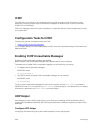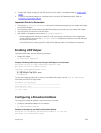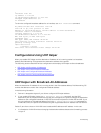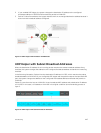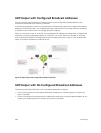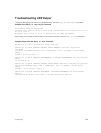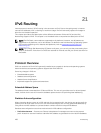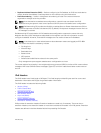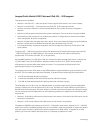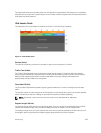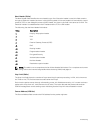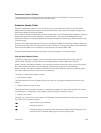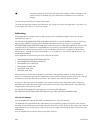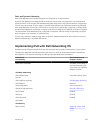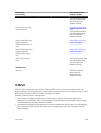Longest Prefix Match (LPM) Table and IPv6 /65 – /128 support
Two partitions are available.
• Partition I with IPv6 /65 – /128 route prefix. Doesn’t support IPv4 entries in the current release.
• Partition II with IPv6 0/0 – /64 route prefix and IPv4 0/0 -0/32 route prefix entries.
• Number of entries in Partition II will be reduced based on the number of entries configured in
Partition I.
• Partitioning will be applied well before the system initialization. This will be done using the NVRAM.
• Dell Networking OS provides CLI for enabling the partition. Configuration will be stored in NVRAM
when the operator saves the configuration.
• Partition will take effect only after the switch reboot. During the reboot Dell Networking OS reads the
partition configuration from NVRAM and uses the same for partitioning the LPM.
• A command has been introduced to partition the LPM to support provisioning of IPv6 /65 to /128
route prefixes.
To support /65 – /128 IPv6 route prefix entries, Dell Networking OS needs to be programmed with /65
- /128 bit IPv6 support on S6000 platform. The number of entries as well needs to be explicitly
programmed. This number can be1K, 2K, or 3K granularity.
On the S6000 platform, for IPv6 /65 to /128 will consume the same storage banks which is used by the
L3_DEFIP table. Once the IPv6 128 bit is enabled, number of entries in L3_DEFIP will be reduced.
LPM partitioning will take effect after reboot of the box. This is because the SDK does the LPM
partitioning during the chip initialization.
The longest prefix match (LPM) table on the S6000 platform supports different types of prefixes for IPv6
and IPv4. The route table, also called the LPM table, is divided into the following three logical tables:
1. IPv4 32-bit LPM table (Holds IPv4 Prefixes)
2. IPv6 64-bit LPM table (Holds IPv6 Prefixes less than /65 Prefix Length)
3. IPv6 128-bit LPM table (Holds IPv6 Prefixes greater than /64 Prefix Length)
The LPM table, which is 8K in size, is a dedicated table. It comprises eight ternary content addressable
memory (CAM) blocks, with each block being 1K in size. The table can contain 16KIPv4 route entries or
8K IPv6 route entries (less than /65 prefix-length) or 3K IPv6 route entries (greater than /64 prefix-length).
You can configure the LPM table with one of the following partitions to support the IPv4 and IPv6 prefix
route entries:
• Partition 1: IPv6 128-bit LPM entries can be stored in this partition. IPv4 and 64-bit IPv6 entries cannot
be saved in this partition.
• Partition 2: IPv4 LPM and 64-bit IPv6 LPM entries can be stored in this partition.
The platforms (S6000) useS presently only IPv6 /0 – 0/64 prefix route entries. Support for /0 – /128 IPv6
prefix route entries is available, although they are not utilized. A total of eight pools or regions are present
with each region containing 1024 210-bit entries (supports up to 0/64 prefix). To support up to /128
prefixes, you must use 2 banks (410-bit entries). It is necessary to partition the LPM.
452
IPv6 Routing



